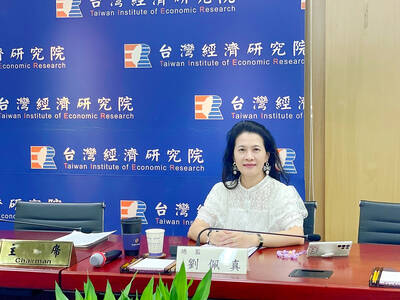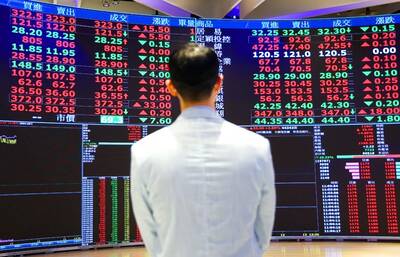A wave of crime is sweeping rural parts of the US, with organized gangs and petty thieves heisting commodities ranging from wheat to almonds, copper wires to hardwood trees.
Attracted by the prospect of making easy money, criminals steal onto private and state-owned forests to illegally fell timber, carry off entire shipping containers of almonds, and risk their lives to strip electricity transmitters of their copper wiring.
"As the price of a particular commodity increases, it becomes the target of crooks because they're opportunists who are looking to make money," said Bill Yoshimoto of the Agricultural Crime Task Force in California's rural Tulare County, where nearly two-thirds of its 311,000 residents live from farming.
"When fuel prices went up, we saw a spike in gasoline thefts. Right now we're seeing an epidemic of metal theft," he said.
"There is so much copper wire coming in that we know a lot of it isn't scrap metal that someone's discarded -- they're pulling down transmission wires to get it," Yoshimoto said.
With California almond prices tripling between 2001 and 2005, when they went from US$0.91 a pound (US$2 per kilogram) to US$2.81, thieves have also turned to "wholesale almond theft," Yoshimoto said.
"They didn't go to the trees or fields to take the almonds; they waited until they were processed and in containers for shipment, and stole the whole container off the truck," he said.
Wheat, which has doubled in price since January last year, is being stolen by the elevator-full in the Great Plains, said Dusty Fritz, spokeswoman for the Kansas Association of Wheat.
Trees are being illegally felled in forests.
"Timber theft is widespread around the country on private forestlands, national park forestlands, industry forestlands," Brigitte Johnson of the American Forest Foundation told reporters.
With a hardwood from the Appalachian mountains in Virginia fetching more than US$1,000 for a single tree trunk, according to a report by the Forestry Department at Virginia Tech university, and given the vastness and remoteness of many forests, timber theft is a route to easy money for thieves.
"Suppose you have 2,000 acres [809 hectares] of forestland. There's no way you can monitor it all the time. A lot of owners have forestland but don't live there. And even if you have somebody helping or maintaining the forest or looking out, a thief could go deep in the forest, take the wood and get out," Johnson said.
Tree farmers are losing "hundreds of millions of dollars a year" to thieves, Johnson said.
Agricultural theft cost US farmers an estimated US$5 billion in 2006 and last year, according to a report by the Urban Institute in Washington, while metal theft alone cost California farmers US$10 million in the same period.
That is the official figure; Yoshimoto estimated that the true loss to thieves is around 10 times greater.
"The Urban Institute estimates that one in 10 farmers never reports theft. So they estimate that the actual farm loss is nine, 10 times greater than what's being reported," he said.
Many of the stolen commodities are off-loaded to a buyer who is several hundred miles if not an ocean away from the scene of the original crime, Yoshimoto said.
"The almond thefts took place up to 200 miles [320km] away from Sacramento but wound up in a warehouse in Sacramento to be distributed around the US and, we think, in Europe," he said.
A big market for metals stolen on the West Coast of the US is China, he said.
The US federal government has created the Agricultural Crime, Technology, Information, and Operations Network (ACTION), but the program is "in minimum operation mode because of budget delays," he said.

A proposed 100 percent tariff on chip imports announced by US President Donald Trump could shift more of Taiwan’s semiconductor production overseas, a Taiwan Institute of Economic Research (TIER) researcher said yesterday. Trump’s tariff policy will accelerate the global semiconductor industry’s pace to establish roots in the US, leading to higher supply chain costs and ultimately raising prices of consumer electronics and creating uncertainty for future market demand, Arisa Liu (劉佩真) at the institute’s Taiwan Industry Economics Database said in a telephone interview. Trump’s move signals his intention to "restore the glory of the US semiconductor industry," Liu noted, saying that

On Ireland’s blustery western seaboard, researchers are gleefully flying giant kites — not for fun, but in the hope of generating renewable electricity and sparking a “revolution” in wind energy. “We use a kite to capture the wind and a generator at the bottom of it that captures the power,” said Padraic Doherty of Kitepower, the Dutch firm behind the venture. At its test site in operation since September 2023 near the small town of Bangor Erris, the team transports the vast 60-square-meter kite from a hangar across the lunar-like bogland to a generator. The kite is then attached by a

Foxconn Technology Co (鴻準精密), a metal casing supplier owned by Hon Hai Precision Industry Co (鴻海精密), yesterday announced plans to invest US$1 billion in the US over the next decade as part of its business transformation strategy. The Apple Inc supplier said in a statement that its board approved the investment on Thursday, as part of a transformation strategy focused on precision mold development, smart manufacturing, robotics and advanced automation. The strategy would have a strong emphasis on artificial intelligence (AI), the company added. The company said it aims to build a flexible, intelligent production ecosystem to boost competitiveness and sustainability. Foxconn

STILL UNCLEAR: Several aspects of the policy still need to be clarified, such as whether the exemptions would expand to related products, PwC Taiwan warned The TAIEX surged yesterday, led by gains in Taiwan Semiconductor Manufacturing Co (TSMC, 台積電), after US President Donald Trump announced a sweeping 100 percent tariff on imported semiconductors — while exempting companies operating or building plants in the US, which includes TSMC. The benchmark index jumped 556.41 points, or 2.37 percent, to close at 24,003.77, breaching the 24,000-point level and hitting its highest close this year, Taiwan Stock Exchange (TWSE) data showed. TSMC rose NT$55, or 4.89 percent, to close at a record NT$1,180, as the company is already investing heavily in a multibillion-dollar plant in Arizona that led investors to assume